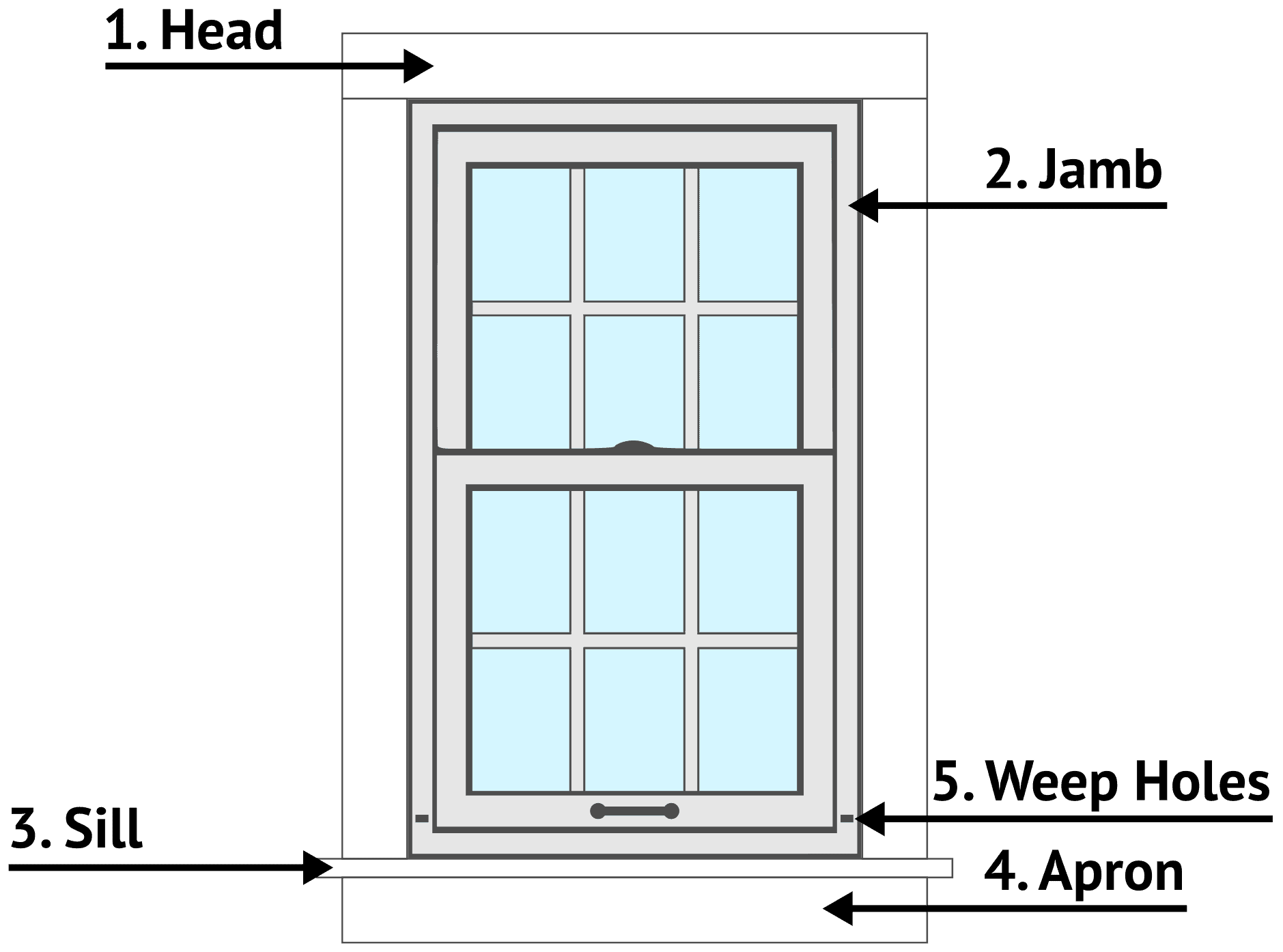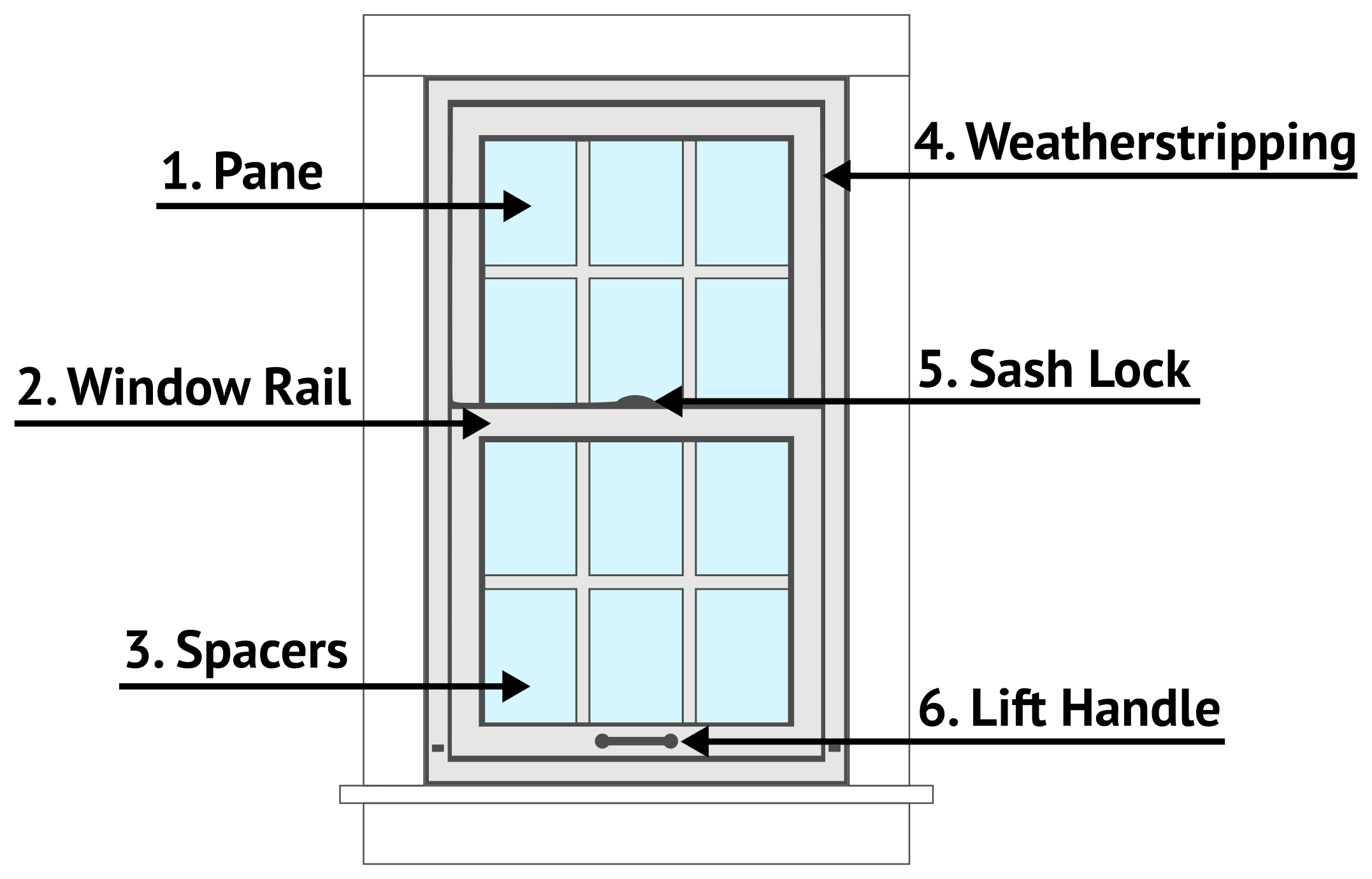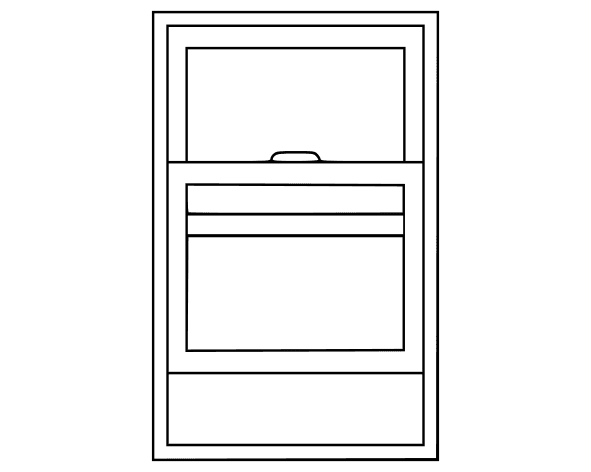
Choosing the right window frame material is one of the most important aspects when it comes to new or replacement windows. Each type of window frame not only defines the character and style of your home but also plays a significant role in its long-term durability and ease of maintenance. Whether you’re looking for the affordability and energy efficiency of vinyl, the natural beauty and strength of wood, or the modern appeal and resilience of fiberglass and composite, we guide you through the options to find the perfect match for your window replacement project.
Vinyl Windows
Average Cost:
$665 per window
Vinyl window replacement averages between $420 to $910 per window. Known for their cost-effectiveness and minimal upkeep, vinyl windows are the most popular window choice. These windows come in a variety of styles, including designs that mimic the appearance of wood, but at a significantly lower price. They are available in numerous colors and are known for their good energy-efficiency qualities.
Vinyl frames might not be the best choice for all environments though. They are not as strong as other frame materials and can melt under extreme heat, such as in wildfires, making them a less suitable option for fire-prone areas.
Pros:
- Most popular replacement window frames
- Most cost-effective window frame material
- Good energy efficiency
Cons:
- Not ideal for every climate
- Not as strong as other frame materials
Aluminum Windows
Average Cost:
$671 per window
Aluminum window replacement usually costs $424 to $919 per window. Aluminum window frames combine strength and sleek design, offering a contemporary look that complements any modern home. These frames are particularly valued for their durability and easy maintenance, making them an excellent choice across various climates and conditions. Unlike other materials, aluminum frames do not warp, ensuring they retain their shape and functionality over time, regardless of weather changes.
While aluminum is low-maintenance and offers a modern look, it’s not the most energy-efficient option. The material’s tendency to conduct heat can lead to less effective insulation compared to other materials. Also, care must be taken during installation as aluminum can dent.
Pros:
- Stylish, modern design
- Resistant to warping, suitable for many climates
- Requires little to no maintenance
Cons:
- Typically more expensive than vinyl frames
- Lower energy efficiency due to heat conduction
- Can dent if mishandled
Fiberglass Windows
Average Cost:
$1,062 per window
Fiberglass window replacement typically costs $671 to $1,453 per window. Fiberglass window frames are known for their excellent insulation and durability, making them a superb choice for homeowners looking for longevity and performance. These frames come in a variety of styles and colors to ensure you get the right fit for your project. If you’re seeking a window frame that is not only highly resistant to heat but also environmentally friendly, fiberglass is an increasingly popular option. Although they cost more than vinyl and aluminum, their potential to last 75+ years offers long-term value.
It’s important to note that fiberglass frames are not as readily available as vinyl, and their installation can be more complex. To ensure proper installation, it’s important to work with a contractor experienced with fiberglass materials.
Pros:
- Among the most durable materials
- Suitable for various climates
- Available in a wide range of colors
Cons:
- More expensive than vinyl or aluminum frames
- Installation can be challenging
Wood Windows
Average Cost:
$1,483 per window
Wood window replacement costs between $936 to $2,029 per window on average. Wood window frames are celebrated for their classic beauty and natural insulating properties, making them a favorite for historical and luxury homes. Wood windows are eco-friendly, withstand various weather conditions, offer superior insulation, and enhance the value and appeal of any home.
Keep in mind, wood frames require more maintenance than other materials to prevent issues such as rotting and warping. Additionally, despite their many benefits, wood windows are among the more expensive options available.
Pros:
- Elegant, traditional look
- Excellent natural insulation properties
- Resistant to different weather conditions
Cons:
- Higher cost relative to other frame materials
- Requires regular maintenance to prevent deterioration
Composite Windows
Average Cost:
$1,429 per window
Composite window replacement usually costs between $903 to $1,956 per window. Composite window frames are a premium choice that combine the durability of materials like aluminum with the natural beauty of wood. Often referred to as clad wood windows, these frames feature a wood core covered by vinyl, fiberglass, or aluminum. This combination ensures the energy efficiency and resilience of wood, while significantly reducing the maintenance demands typically associated with wooden windows.
Composite windows are known for their exceptional durability and are well-suited for even the most extreme climates. Despite their many advantages, it’s important to note that they are among the most expensive options available in the market.
Pros:
- Extremely durable, built to last
- Ideal for extreme climates
- Low maintenance compared to wood frames
Cons:
- Among the highest priced window frame materials
- Installation can be complicated
What is a Window Frame?
A window frame is the part that holds the glass and shapes how your window looks. It also helps make your window more energy-efficient. For example, if you’re looking for “white windows,” you’re actually looking for windows with white frames.
Before you start looking for replacement windows or scheduling maintenance, it’s useful to familiarize yourself with the various parts and terminology of window frames. This knowledge can help you make confident and efficient decisions when selecting replacement windows.

How much does window replacement cost?
WinGuys window cost calculator allows you to set price range, brand quality, and many other details to better estimate home window replacement costs.
Parts of a Window Frame
The window frame holds the window pane in place and can be constructed from materials like vinyl, aluminum, fiberglass, wood, or composite. Each part of the frame is an important piece of the window:

- Head: This is the top horizontal part of the window frame.
- Jamb: These are the vertical sides that make up the window frame.
- Sill: The sill, also known as a window stool, is the bottom horizontal part of the window frame.
- Apron: Located below the sill, the apron is a decorative piece that adds style to the window.
- Weep Holes: Found in metal and vinyl window frames, weep holes are small openings at the bottom that let rainwater drain out.
Parts of a Window Sash
The window sash is the movable part of the window that contains the glass pane. However, it’s more than just a holder for the glass. Below are the key parts of a window sash:

- Pane: This is the glass, or multiple pieces of glass in your window.
- Window Rail: These are the top and bottom parts of the sash. In double-hung windows, there are four rails: two on the top sash and two on the bottom sash.
- Spacers: Spacers are inserted between the glass panes in double and triple-pane windows to improve insulation.
- Weatherstripping: This material is added around the frame and sash where different materials meet, providing both energy efficiency and protection from weather.
- Sash Lock: This mechanism locks the window to prevent rattling and provides security.
- Lift: The lift is the handle used to open and close the window sash.
Additional Components of a Window
A window consists of more than just its frame and glass. Here are some additional parts you should know about:
- Casing: The casing is the trim that surrounds the window frame on the house’s exterior. It helps seal the window and prevents outside air from getting inside.
- Mullion: A mullion is a bar or piece of material that joins two or more windows together.
- Grilles: Grilles are the decorative elements that make a window look like it has multiple glass panes.
- Fixed Panel: Also known as a fixed pane, this is the part of the window that doesn’t open. It’s common in designs like single-hung windows where only one half opens.
Energy-Efficient Window Terms
Understanding energy efficiency terms can make choosing the right windows easier. Here’s what you need to know to pick a highly efficient window:
Low-E Glass: Low-emissivity glass, or Low-E glass, is designed to minimize the ultraviolet light that enters your home, helping to control heat gain and maintain consistent indoor temperatures.
Argon Gas: Argon is a colorless, odorless gas used to insulate double and triple-pane windows. When used with Low-E glass, it helps maintain the window at room temperature, reducing drafts and improving energy efficiency.
Other Considerations When Choosing Window Frame Types
When considering replacement windows, it’s important to align your choices with your home’s climate, desired look, and energy efficiency goals. Set your budget according to the window frame types that meet your requirements. Utilize tools like our window replacement calculator to get a better understanding of window frame material costs. This approach will help you make well-informed decisions when selecting window frames that best suit your home and financial objectives.
Return on Investment
Industry data shows that investing in new windows, particularly vinyl and wood, can recoup a significant portion of their cost. On average, homeowners can expect about 67% of their investment back in added home value, with vinyl and wood windows often cited as some of the most cost-effective options. This makes window replacement not only a functional upgrade but also a financially savvy decision.
Window Frame Warranties
Don’t overlook the importance of window warranties. The term “lifetime” warranty can vary significantly between manufacturers, so it’s critical to read the fine print. Understand the duration of the warranty and what conditions it covers to ensure you choose products from manufacturers that truly stand behind their offerings.
The frame is the structural support of a window, and a well-chosen frame can ensure your window functions properly for many years.
Start by identifying the style of window you prefer. Then, select a frame material that suits your local climate and fits your budget. Finally, choose a type of glass that meets your needs for durability and energy efficiency.
Consider how well different materials withstand your local weather conditions. Some materials are better suited for extreme temperatures, moisture, or sun exposure.
Check the material’s insulating properties. Materials like wood, composite, and vinyl offer good insulation and can help maintain a consistent indoor temperature.
The maintenance varies by material. Wood frames may require regular painting or staining, while materials like vinyl and fiberglass need less upkeep.




